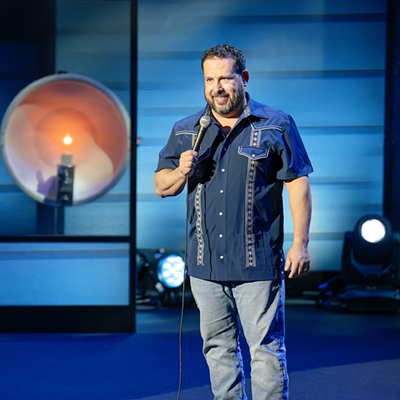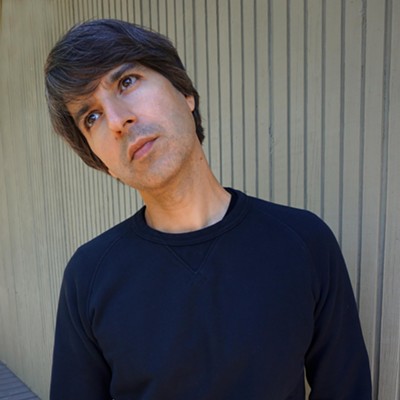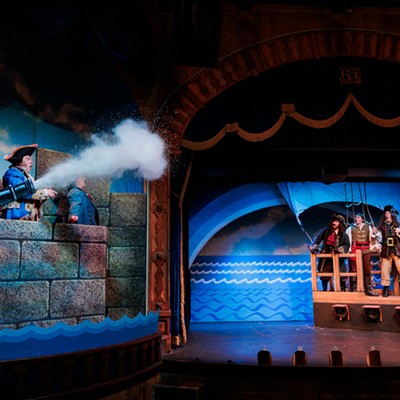Christmas trees in stores right after Halloween? Gone. Holiday music 24 hours a day on the radio? Silenced. Having to spend tons of money on presents that will probably be returned? Finished.
Instead, there would be simple celebrations (sans huge credit card bills) that would embrace the true spirit of the holidays: Music, dance, storytelling and laughter would be the hallmarks of the season. We'd even celebrate our differences.
This may sound like a fantasy, but if you look hard enough, you will find a place in Tucson where music, dance and storytelling really are the highlights of the season.
Tucson Children's Museum hosts its fifth annual Festivals of Light, starting Sunday, Dec. 4. Seven cultural celebrations take place through January, all from 1 to 4 p.m.: Sunday, Dec. 4: Diwali; Sunday, Dec. 18: Italian Christmas; Monday, Dec. 26: Hanukkah; Saturday, Dec. 31: Kwanzaa; Sunday, Jan. 1: Japanese New Year; Saturday, Jan. 7: Three Kings Day; Saturday, Jan. 28: Chinese New Year. The museum is located at 200 S. Sixth Ave. Admission is $3.50 for children 2 to 16; $5.50 for adults; $4.50 for seniors. Festivals are included in the cost of admission. (There's free admission on Dec. 18 and Jan. 7.) Call 792-9985 or visit tucsonchildrensmuseum.org for more information.
Peggy Solís, the museum's director of public relations and marketing, says the museum's Festivals of Light began in 2001, highlighting several cultural celebrations. Most of these traditions are celebrated each year, such as Hanukkah, Kwanzaa, Japanese New Year, Chinese New Year, Three Kings Day and Christmas. Diwali (an East Indian celebration), Loy Krathong (a Thai celebration) and Eid al-Fitr (a Muslim celebration) are rotated. The museum also rotates Christmas celebrations, with Irish, Brazilian and Polish traditions highlighted in previous years.
While Solís says the museum itself is geared toward children aged 2 to 12, "the festivals are geared for the whole family. We have a lot of families who come. They get to learn about a new culture and share that with their children."
The first festival scheduled is Diwali on Sunday, Dec. 4. As described at tucsonchildrensmuseum.org, Diwali is a widely celebrated annual festival observed during the Hindu month of Aippasi, in late November or early December. Homes are outlined with oil lamps called diyas, to welcome Lakshmi, the goddess of wealth and prosperity. The word "Diwali" comes from the Sanskrit word "Deepavali." Deepa means light, and Avali means a row. Put together, it means a row of lights. Diwali reminds Hindu people around the world of the true values of life, which are thought to be light over darkness, good over evil and knowledge over ignorance.
The museum works with the Indian Society of Southern Arizona to offer henna hand painting, Hindi writing demonstrations, dance performances and traditional music during the festival.
On Sunday, Dec, 18, museum-goers can celebrate early with an Italian Christmas. "We will have English and Italian carols. The carols are actually opera. The (carolers) will stroll through the museum," says Solís. Italian games and storytelling will be highlighted throughout the afternoon.
On Monday, Dec. 26, Hanukkah officially begins, and the Children's Museum marks the start of the holiday with another festival. Working with the Jewish Federation of Southern Arizona, the museum offers dreidel games, storytelling, dances and music.
On Saturday, Dec. 31, families can enjoy storytelling, arts and crafts (children can make African masks and necklaces) and a performance by the Dambe Project during the Kwanzaa festival. As described at tucsonchildrensmuseum.org, Kwanzaa is a holiday that celebrates African-American heritage, culture and community. It is observed from Dec. 26 through Jan. 1. Kwanzaa is not a religious holiday, but a cultural one. The name Kwanzaa comes from the Swahili phrase "matunda ya kwanza," which means "first fruits." Each of the seven days of Kwanzaa is dedicated to one principle: unity, self-determination, collective responsibility, cooperation, purpose, creativity and faith. The goal of Kwanzaa is to remind people to put the seven principles into daily practice.
On Sunday, Jan. 1, the Japan America Society of Tucson joins the museum to mark the Japanese New Year. Origami workshops, Japanese calligraphy, traditional dance, a tea ceremony and sword demonstrations are some of the activities that will be featured.
On Saturday, Jan. 7, the museum will ring with the sounds of a mariachi band and folklorico dancers during the Three Kings Day festival. Arts and crafts will be offered, too. Three Kings Day is observed on Jan. 6 and is often viewed as the last day of the Christmas season. It is a Christian celebration that commemorates the Biblical story of the three kings who followed the star of Bethlehem to bring gifts to the Christ child.
On Saturday, Jan. 28, the Chinese New Year is the last of the Festivals of Light. Members of the Tucson Chinese School will dance and offer paper folding and Chinese calligraphy demonstrations. The new year (Year of the Dog) begins on Feb. 29.
Solís says the festivals are some of the most popular events at the museum. "We really enjoy hosting the Festival of Lights. We like to let our visitors know it's not our staff who run the activities. We love inviting different community groups. This is how they celebrate the holidays. It's a great learning experience, and it's fun. You learn about the different groups in our community. Tucson isn't necessarily New York, but Tucson has its diversity, too."







